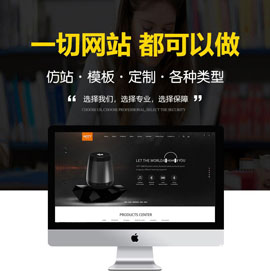怎么在Android中捕獲點(diǎn)擊事件范圍-創(chuàng)新互聯(lián)
今天就跟大家聊聊有關(guān)怎么在Android中捕獲點(diǎn)擊事件范圍,可能很多人都不太了解,為了讓大家更加了解,小編給大家總結(jié)了以下內(nèi)容,希望大家根據(jù)這篇文章可以有所收獲。

View的Tween動(dòng)畫過程中點(diǎn)擊事件的位置并不會(huì)因?yàn)閯?dòng)畫位置的改變而改變,是因?yàn)樵趧?dòng)畫過程中l(wèi)ayout的位置實(shí)際上沒有變,因此曾經(jīng)一度認(rèn)為View的點(diǎn)擊事件(其實(shí)不僅僅是點(diǎn)擊事件,包括所有的觸摸事件)觸發(fā)的范圍是該View在layout的時(shí)候指定的left,top,right,bottom。今天才發(fā)現(xiàn)不完全是這樣的。一切都是因?yàn)槠綍r(shí)看代碼沒有仔細(xì)一點(diǎn)所造成了對(duì)問題理解不全面。
在這里記錄一下發(fā)現(xiàn)問題到處理問題的過程。

自定義這樣一個(gè)ViewGroup,layout兩個(gè)線性布局,左邊的LinearLayout覆蓋全屏幕,右面的LinearLayout在屏幕外面隱藏。然后觀察在想做滑動(dòng)的過程中,第二個(gè)LinearLayout顯示出來的過程中,按鈕Button和第二個(gè)線性布局的位置信息:

可以看到,在向左滑第二個(gè)線性布顯示出來的過程中,他的位置并沒有變,這里指的是通過getLeft(),getTop(),getRight(),getBottom()獲得的位置,也就是由layout決定的位置。
既然位置并沒有改變,那么這時(shí)候點(diǎn)擊第二個(gè)線性布局和按鈕點(diǎn)擊事件也被響應(yīng)了,就說明捕獲點(diǎn)擊事件的位置并不完全是在layout的位置。因?yàn)椴]有將手伸到屏幕外面去點(diǎn)擊…
回頭來看ViewGroup#dispatchTouchEvent方法在分發(fā)觸摸事件的時(shí)候:
for (int i = count - 1; i >= 0; i--) {
final View child = children[i];
if ((child.mViewFlags & VISIBILITY_MASK) == VISIBLE
|| child.getAnimation() != null) {
child.getHitRect(frame);
if (frame.contains(scrolledXInt, scrolledYInt)) {
// offset the event to the view's coordinate system
final float xc = scrolledXFloat - child.mLeft;
final float yc = scrolledYFloat - child.mTop;
ev.setLocation(xc, yc);
child.mPrivateFlags &= ~CANCEL_NEXT_UP_EVENT;
if (child.dispatchTouchEvent(ev)) {
// Event handled, we have a target now.
mMotionTarget = child;
return true;
}
}
}其中frame.contains(scrolledXInt, scrolledYInt)函數(shù)就是判斷點(diǎn)(scrolledXInt,scrolledYInt)是不是在frame矩形里面。這個(gè)矩形frame是由child.getHitRect(frame);獲得的:
public void getHitRect(Rect outRect) {
outRect.set(mLeft, mTop, mRight, mBottom);
}顯然這個(gè)矩形就是由該子View的Layout的布局參數(shù)所決定的。但是scrolledXInt和scrolledYInt參數(shù),并不是我們手指點(diǎn)擊的位置:
final int action = ev.getAction(); final float xf = ev.getX(); final float yf = ev.getY(); final float scrolledXFloat = xf + mScrollX; final float scrolledYFloat = yf + mScrollY; …… final int scrolledXInt = (int) scrolledXFloat; final int scrolledYInt = (int) scrolledYFloat;
可以看出,在判斷這個(gè)點(diǎn)是否包含在子View內(nèi)的時(shí)候,這個(gè)點(diǎn)不是手指所點(diǎn)擊的坐標(biāo),而是手指點(diǎn)擊的坐標(biāo)加上了mScrollX和mScrollY,然后在判斷是否在該子View的范圍里面。
現(xiàn)在思考向左滑動(dòng)的過程中,雖然第二個(gè)線性布局的位置沒有變,還是layout的參數(shù)位置,是:mLeft:720,mTop:0,mRight:1440,mBottom:1134。
但是他的父View的mScrollX改變了,向左滑mScrollX大于0,這是用手點(diǎn)擊第二個(gè)線性布局,手所點(diǎn)擊的位置再加上mScrollX的值,這時(shí)就會(huì)落在了第二個(gè)線性布局的layout的范圍里面。
測(cè)試代碼:
自定義MyViewGroup:
public class MyViewGroup extends ViewGroup {
public static final String TAG = "MyViewGroup";
private int childCount;
private GestureDetector detector;
private Button btn;
private LinearLayout ll2;
public MyViewGroup(Context context, AttributeSet attrs, int defStyle) {
super(context, attrs, defStyle);
init(context);
}
public MyViewGroup(Context context, AttributeSet attrs) {
super(context, attrs);
init(context);
}
public MyViewGroup(Context context) {
super(context);
init(context);
}
private void init(final Context context) {
detector = new GestureDetector(context, new MyOnGestureListener());
LinearLayout ll1 = new LinearLayout(context);
ll1.setBackgroundColor(Color.BLUE);
ll2 = new LinearLayout(context);
ll2.setBackgroundColor(Color.RED);
btn = new Button(context);
btn.setText("點(diǎn)擊按鈕");
ll2.addView(btn);
addView(ll1);
addView(ll2);
setOnTouchListener(new MyTouchEvent());
ll2.setOnClickListener(new OnClickListener() {
@Override
public void onClick(View v) {
Toast.makeText(context, "點(diǎn)擊了線性布局2", 0).show();
}
});
btn.setOnClickListener(new OnClickListener() {
@Override
public void onClick(View v) {
Toast.makeText(context, "點(diǎn)擊了Button", 0).show();
}
});
}
@Override
protected void onMeasure(int widthMeasureSpec, int heightMeasureSpec) {
super.onMeasure(widthMeasureSpec, heightMeasureSpec);
childCount = getChildCount();
for (int i = 0; i < childCount; i++) {
View child = getChildAt(i);
child.measure(widthMeasureSpec,heightMeasureSpec);
}
}
@Override
protected void onLayout(boolean changed, int l, int t, int r, int b) {
for (int i = 0; i < childCount; i++) {
View child = getChildAt(i);
child.layout(0+i*getWidth(), 0, (i+1)*getWidth(), getHeight());
}
}
private class MyTouchEvent implements View.OnTouchListener{
@Override
public boolean onTouch(View v, MotionEvent event) {
detector.onTouchEvent(event);
return true;
}
}
private class MyOnGestureListener extends SimpleOnGestureListener{
@Override
public boolean onScroll(MotionEvent e1, MotionEvent e2,
float distanceX, float distanceY) {
scrollBy((int) distanceX, 0);
if (getScrollX()% 10 == 0) {
Log.i(TAG, "Button左上右下位置:" + btn.getLeft() + "/"
+ btn.getTop() + "/"
+ btn.getRight() + "/"
+ btn.getBottom());
Log.i(TAG, "線性布局2的左上右下位置:" + ll2.getLeft() + "/"
+ ll2.getTop() + "/"
+ ll2.getRight() + "/"
+ ll2.getBottom());
Log.i(TAG, "MyViewGroup的mScrollX:" + getScrollX());
}
return super.onScroll(e1, e2, distanceX, distanceY);
}
}
}然后在Activity里面:
public class MainActivity extends Activity {
@Override
protected void onCreate(Bundle savedInstanceState) {
super.onCreate(savedInstanceState);
setContentView(new MyViewGroup(this));
}
}Android是什么Android是一種基于Linux內(nèi)核的自由及開放源代碼的操作系統(tǒng),主要使用于移動(dòng)設(shè)備,如智能手機(jī)和平板電腦,由美國Google公司和開放手機(jī)聯(lián)盟領(lǐng)導(dǎo)及開發(fā)。
看完上述內(nèi)容,你們對(duì)怎么在Android中捕獲點(diǎn)擊事件范圍有進(jìn)一步的了解嗎?如果還想了解更多知識(shí)或者相關(guān)內(nèi)容,請(qǐng)關(guān)注創(chuàng)新互聯(lián)行業(yè)資訊頻道,感謝大家的支持。
新聞名稱:怎么在Android中捕獲點(diǎn)擊事件范圍-創(chuàng)新互聯(lián)
本文URL:http://chinadenli.net/article10/didsgo.html
成都網(wǎng)站建設(shè)公司_創(chuàng)新互聯(lián),為您提供關(guān)鍵詞優(yōu)化、服務(wù)器托管、建站公司、Google、企業(yè)建站、響應(yīng)式網(wǎng)站
聲明:本網(wǎng)站發(fā)布的內(nèi)容(圖片、視頻和文字)以用戶投稿、用戶轉(zhuǎn)載內(nèi)容為主,如果涉及侵權(quán)請(qǐng)盡快告知,我們將會(huì)在第一時(shí)間刪除。文章觀點(diǎn)不代表本網(wǎng)站立場(chǎng),如需處理請(qǐng)聯(lián)系客服。電話:028-86922220;郵箱:631063699@qq.com。內(nèi)容未經(jīng)允許不得轉(zhuǎn)載,或轉(zhuǎn)載時(shí)需注明來源: 創(chuàng)新互聯(lián)
猜你還喜歡下面的內(nèi)容
- 詳解Yii如何使用DbTarget實(shí)現(xiàn)日志功能-創(chuàng)新互聯(lián)
- 如何使用tf.nn.dynamic_rnn展開時(shí)間維度-創(chuàng)新互聯(lián)
- 淺談Linux日志文件-創(chuàng)新互聯(lián)
- 詳解Python的循環(huán)結(jié)構(gòu)知識(shí)點(diǎn)-創(chuàng)新互聯(lián)
- css里大于號(hào)代表的是什么意思-創(chuàng)新互聯(lián)
- html中把按鈕設(shè)置居中如何讓文本框居中?-創(chuàng)新互聯(lián)
- 電視pppoe連接無線網(wǎng)絡(luò)pppoe怎么連接?-創(chuàng)新互聯(lián)

- 廣州品牌網(wǎng)站制作有什么特點(diǎn)? 2022-12-20
- 如何打響品牌網(wǎng)站制作的知名度 2021-12-11
- 品牌網(wǎng)站制作之搜索引擎營(yíng)銷 2021-11-17
- SEO優(yōu)化如何才能戰(zhàn)勝競(jìng)爭(zhēng)對(duì)手 2022-06-04
- 品牌網(wǎng)站制作好方法好步驟有哪些? 2022-06-27
- 品牌網(wǎng)站制作常見的布局方式! 2022-05-11
- 品牌網(wǎng)站制作應(yīng)該體現(xiàn)企業(yè)文化和個(gè)性 2021-08-12
- 周口品牌網(wǎng)站建設(shè):在品牌網(wǎng)站制作的過程中有哪些值得注意的問題? 2021-09-10
- 品牌網(wǎng)站制作好后網(wǎng)站URL優(yōu)化有技巧 2022-08-12
- 品牌網(wǎng)站制作解決方案七步走 2021-12-19
- 品牌網(wǎng)站制作有哪些重要注意事項(xiàng)? 2016-08-20
- 湛江品牌網(wǎng)站制作:做好品牌網(wǎng)站制作方案有哪些要點(diǎn)? 2021-12-23